When planning a move or downsizing, the process can be exciting and overwhelming. It can bring up memories and other thoughts, positive or negative, that you may not want to deal with right now. But, having the courage to see the better life you want will give you the fuel to move past the "guilt" of leaving items behind when moving to downsize your life.
Jump to:
- Put your emotions in check.
- Think outside the box.
- Do the Dot Game with your immediate family
- Find out why you are keeping items.
- Remember the adage, out of sight, out of mind.
- Remember, there is a difference between wanting and needing something.
- Remember, you don't need to let go of the memories; you need to let go of the stuff.
- Give to someone or a charity that you love.
- Figure out what stops you from giving unwanted stuff away to nonprofits.
The "guilt" is bound to come into the process of downsizing. "Guilt" from giving away things you received from a loved one, alive or past. "Guilt" from giving away something your kids have made. The "guilt" from giving away something you needed in the future but gave away and had to rebuy. The "guilt" changing the status quo. All these guilts can derail you from completing your tasks when downsizing. This post will talk about ways to get your guilt under control and finally downsize your life and home.
Put your emotions in check.
The first "downsize your life" without guilt tip is not allowing your emotions to get the better of you. Where are your emotions while you are staring at the item? Does the item bring up uplifting or sad memories? Determining where your emotions are for each particular item will give you a better idea of the direction you want to go with that item. If you don't have a clear emotion about the item, talk about the emotions out loud with someone who will not favor the item one way or the other.
Think outside the box.
Creative thinking is critical if you feel guilty giving away stuff. Can this item be repurposed for something in the new place? Small tables can be moved to bedrooms as nightstands (affiliate). Bookshelves (affiliate) can be used to store sweaters in a closet. Some over-the-door (affiliate) organizers can be used for other storage purposes.
Do the Dot Game with your immediate family
I've mentioned this before in my estate planning series, but it's important to say it again. Bring your kids together, and have them pick a color to represent their desired items. Then, have them walk around and add the dots to the backs of the different things.
Find out why you are keeping items.
Write down the reasons you want to keep an object. What does the item mean to you? Is there a story (affiliate) associated with this item? If so, write it down. Then, place the story (affiliate) inside the item. Let it sit there for a week or two. Then revisit the item and the story (affiliate).
Do you still want to keep the item because of the story (affiliate) you wrote?
Or is the story (affiliate) enough with a photograph of the item?
Remember the adage, out of sight, out of mind.
Move the item to an inaccessible area. This could be an attic or basement closet-anywhere you never go. Leave the thing in this place for at least one month.
Do you still want the item?
Have you looked for it?
Does not having the object around make you feel guilty?
Remember, there is a difference between wanting and needing something.
I wrote a post some time ago about showing your kids what wanting and needing means; feel free to revisit it by clicking here.
Remember, you don't need to let go of the memories; you need to let go of the stuff.
Stuff can hold us because of how we acquired it. Keep this in mind when looking at things. Remember that each item should have a purpose. Remind yourself what the use is for that item. Is it still doing that purpose?
Give to someone or a charity that you love.
Finding the right charity helps people want to give stuff away. There are plenty of locations in the area and across the country. Here is my updated Charitable Locations Page for your use.
Figure out what stops you from giving unwanted stuff away to nonprofits.
When giving away items, some people feel that giving them to someone they know helps them give them away sooner. That's fine. But, understand that the people who shop at these second-hand locations do need the item. They are not stealing the thing. They are paying for them. And you are supporting others to get what they need to live a better life. Keeping this in mind will make it easier for you to let go and move past the "who gets my stuff" question that may come up.
Well, there you have it. These are my tips for ensuring you do not feel guilty about letting go of your stuff when downsizing. I hope these tips help you become more aware of your connection with your stuff.
Below are some additional Guilt Free Downsize your Life posts that may also help.
How to Declutter Without Feeling Guilty
Saying "No" Without Guilt - The Seana Method
FIVE WAYS TO SAY NO TO SAVE YOU TIME - Sabrina's Organizing
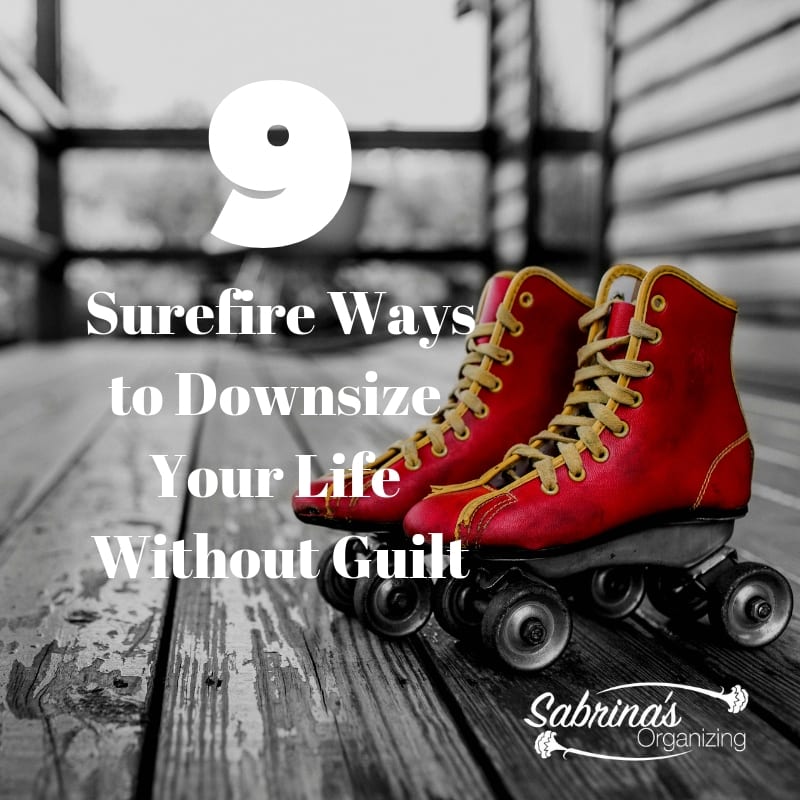
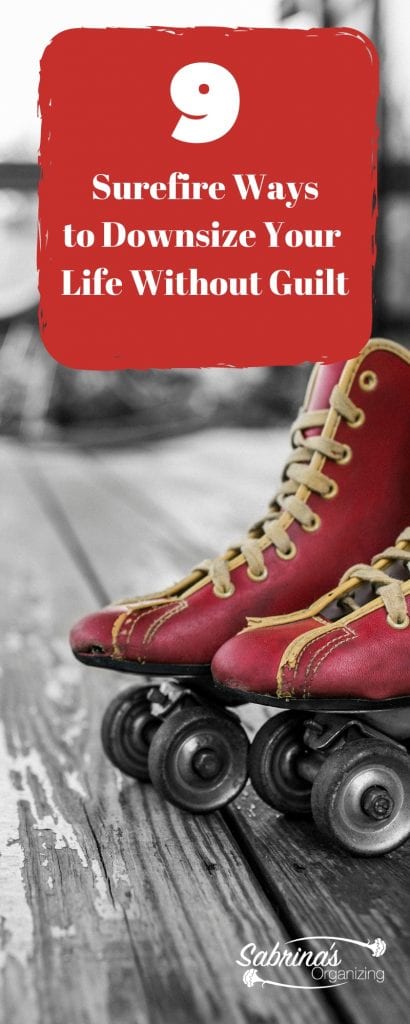
Please note these are affiliate links through Amazon (affiliate) and at no additional cost to you, I will earn an affiliate commission if you click through and decide to make a purchase.
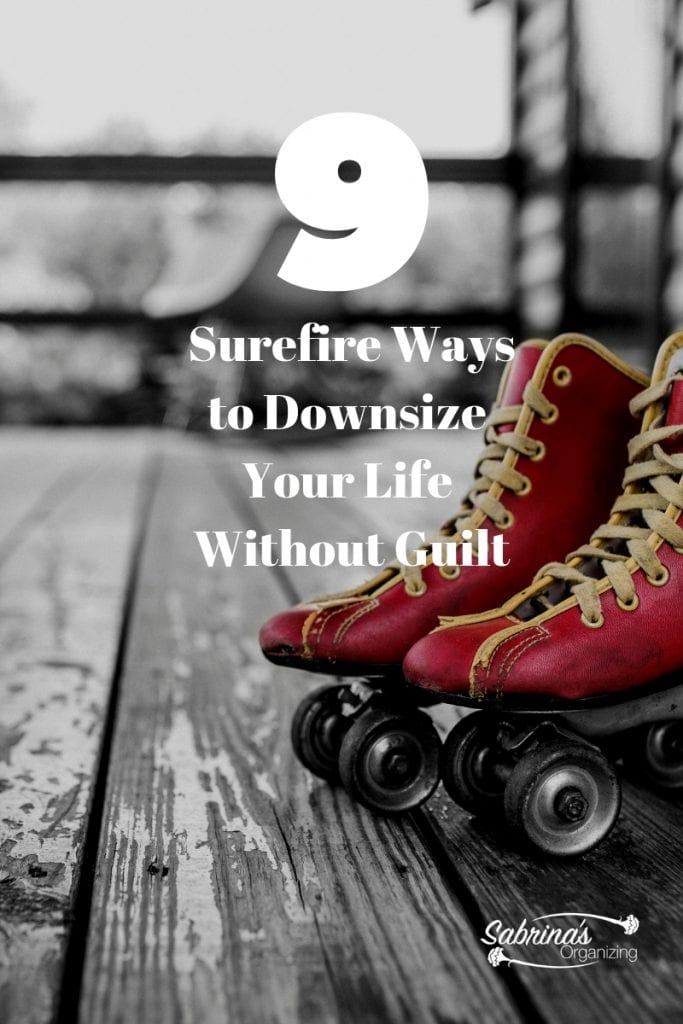



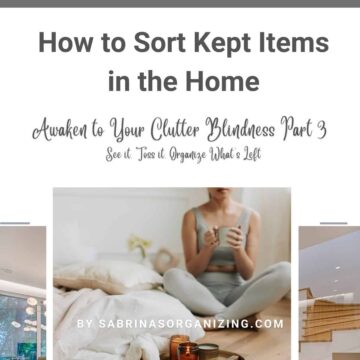


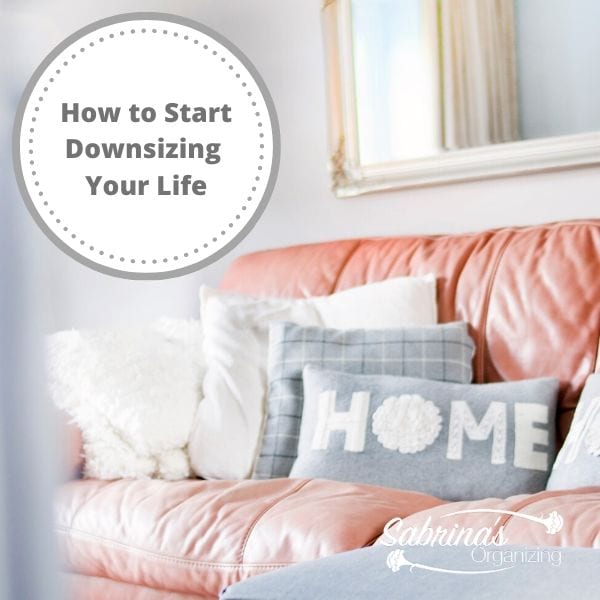


Nancy Haworth says
Sabrina, thank you for all of these great suggestions on how to downsize without guilt. You've provided some very helpful tips!
Janet Barclay says
Great tips, Sabrina, including several I've never heard before. I especially like the suggestion to ask family members which objects they'd like to have. Realizing that no one else wants something can make it easier to let it go, and if they do want it, maybe you can give it to them now instead of later.
Kim says
Hi Sabina,
Great thoughts about how to let go of sentimental items which can be so hard for individuals to do. It's often a question that is asked with not always a quick and easy answer as it is different for everyone. I checked out your needs and wants post for children and love it. I have been thinking more and more about how to help children as this is a question that I often get. I will share your post on my facebook page. 🙂
Seana Turner says
My personal experience has been that the older generations struggle more with this than my younger clients, who let go more easily. I think the old "waste not, want not" rings louder in their ears. I am going to be speaking to a group next month about sentimental items and what to do with them. This was helpful... thanks for sharing!
Sabrina Quairoli says
I'm glad this post helped, Seana. I too find that the older generation has issues with letting go because someone gave them something. As Professional Organizers, we need to help them get perspective on the item through different creative ways to honor these memories without keeping the stuff associated with them. The worst thing for them to do is not make a decision at all.
Linda Samuels says
Ah, the guilt! This emotion is so common and can make letting go especially challenging. I love all of the ideas you've shared to ease the stress of it. In number eight you made me think about the term "safe passage," which is something I often discuss with my clients when they are struggling with letting go. As you described, when we find the right source to give away our possessions, it makes us feel positive and, it's easier for us to let go. That source could be a family member, friend, or organization that will appreciate and care for the item as much as we did.
Sabrina Quairoli says
I love that term, "safe passage." A successful transformation always comes from stretching our limitation but also seeing and feeling good about taking the risk. Thank you for sharing, Linda.